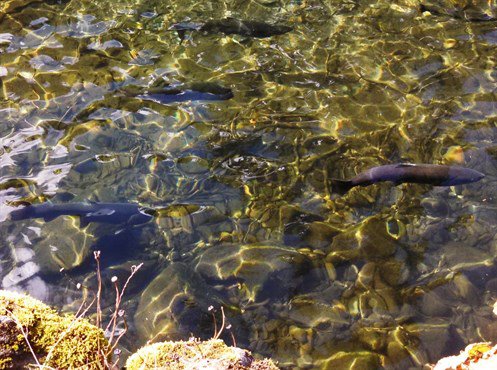2013 is a good year for salmon so far, with some exceptions
- September 25, 2013
- Carol Winkel

The number of adult salmon counted crossing Bonneville Dam in 2013 topped 1 million fish yesterday, September 24, a great accomplishment. Eighty-two percent of those 1,006,619 fish (830,177) were fall Chinook, the biggest run of fall Chinook counted at Bonneville since the dam was completed and counting began in 1938. The fall Chinook run continues through the end of October so that total is going to increase.
What about the other species of salmon in the river — spring and summer Chinook, coho, and sockeye? How did they do, and for several, how are they still doing this year?
Here’s a quick review of those Bonneville 2013 counts through September 24, with data from the Columbia River Data Access in Real Time (DART) website maintained by the University of Washington:
- Spring Chinook: 83,299, just 59 percent of the average over the last 10 years, 2003-2013 (run completed May 31)
- Summer Chinook: 93,097, 105 percent of the 10-year average (run completed July 31)
- Coho: 26,277, just 36 percent of the year-to-date 10-year average, but that run continues into the fall so the number will grow
- Sockeye: 185,505, 104 percent of the year-to-date 10-year average (run continues)
Steelhead, which also are continuing to arrive, were at 219,356 through yesterday, a so-far disappointing 64 percent of the year-to-date 10-year average.
So it’s not been a bad year overall for salmon and steelhead, with some notable exceptions. Many factors contribute to salmon survival, including high spring river flows when the fish migrate to the ocean as juveniles, spill of juvenile fish over dams, good ocean conditions, ongoing projects to improve fish passage at dams and the habitat where fish spawn, and improved survival of fish produced in hatcheries.
But why some runs flourish in the same year others don’t remains largely a mystery. The best guess is that it has something to do with conditions in the ocean and the conditions the fish experienced both in their spawning and rearing habitat and in the rivers when they migrated to the ocean.



